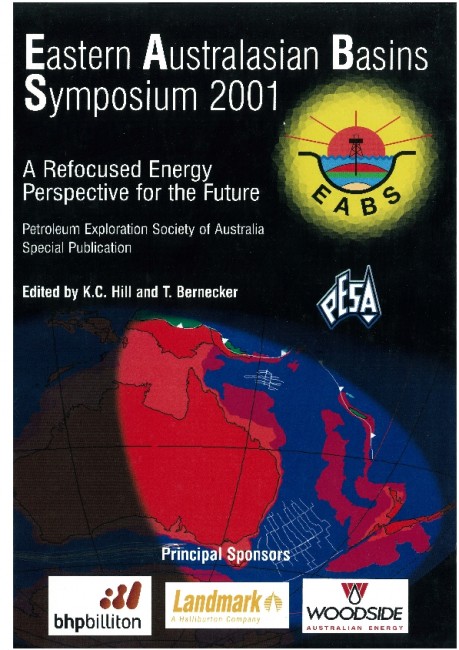Publication Name: Eastern Australian Basins Symposium 2001
Authors: D. Poynton and G. Simon
Date Published: November 2001
Number of Pages: 32
Reference Type: Magazine Article
Abstract:
Coal bed methane (CBM) is one of the products of coalification - the process by which peat is transformed into coal during progressive burial. The initial product is biogenic gas. Thermogenic gas is produced with increasing pressure and temperature and further biogenic gas may be produced after burial has ceased if the coal becomes exposed to an active groundwater system containing methanogenic bacteria.CBM production in Australia commenced in 1996 and most of Australia's coal basins are now covered by roduction, exploration or application licences. The Cooper Basin contains a large volume of coal that is recognised to be the source of much of the conventionally trapped gas. No attempt has been made to explore the basin specifically for CBM to date.
Some of the hundreds of cased conventional gas wells in the deeper portions of the Cooper Basin will offer relatively low-cost opportunities to selectively perforate and test thermogenic CBM potential before opting to finally abandon the wells.
The Weena Trough has been identified as one area in the Cooper Basin in which the Permian coals lie at depths of less than I ,500 metres - the nominal depth limit of CBM exploration. Two wells drilled in the period 1968 - 1970 encountered net coal thicknesses of more than 40 m with individual seams up to 18 metres. The fact that elsewhere these coals are known to be the source of much of the basins conventionally trapped gas, combined with the advances made in understanding the nature of CBM generation, storage and production, makes the Weena Trough a target for CBM evaluation.
Based on conservative assumptions, the Weena Trough could contain an in-place methane volume of greater than 1.3 Tcf. However, the low rank of the coals and the absence of gas content data impart substantial risks to the play.


